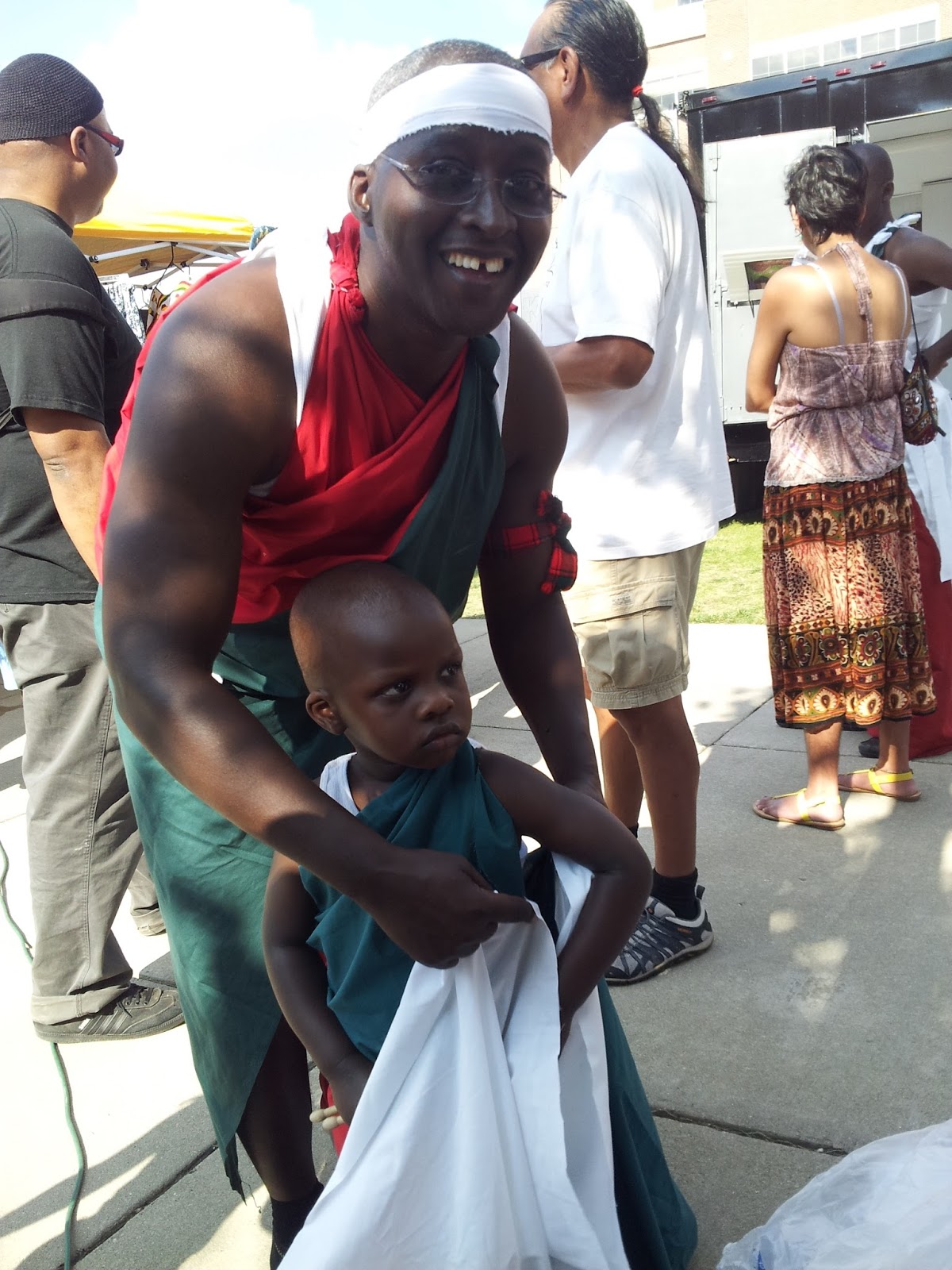At the break, I asked Donne about peace. The dances are celebratory, you know, like the honoring of a community birth or a ritual for young men coming of age. Yet so often, we had spoken of peace. I wondered what he meant. Perhaps the dances marked the end of war? I asked him.
He smiled knowingly. "Well, let me tell you, Jean."
I listened carefully.The answer was humbling. It took a minute to register the full impact. Simple and at some level, heart wrenching at another.
They call themselves the Royal Court Drummers, an extension of the traditional artists of Burundi. The performance of the Royal Drummers has been the same for centuries, techniques and traditions passed down from father to son. The rhythmic chants were said to extol the virtues of the Kingship, regarded as semi-divine. The King had been known to interpret the beating of the central drum into rules for the kingdom.
The drums were (and are) considered sacred. Each one is a hollowed out tree trunk covered with an animal skin. They were kept in sanctuaries, honored for their essential power and connection to the Divine. The Dayton drummers went through copious amounts of red tape to have drums sent to them from Burundi. They provide repairs and upkeep here.
The drums hold a particular order in performance. The central drum establishes a rhythm. Other drums play continuously, offering variations on the central theme. Yet other drums emulate the rhythm of the central drum, adding to the power of the sound. Members of the ensemble take turns playing the central drum: dancing, resting, playing other drums, all without interruption. Each piece, about 25 minutes in duration. There are 8 to 10 players. The dancers work intensely for the entire piece, even the very youngest ones. Inspiring.
The drums were often known as "dispensers of peace." The sacred anthems of the drums were established before the fall of the monarchy, before the massacre of Hutus, before politics, before genocide. The origins were joyful! The playing of these sacred objects was about fertility and regeneration, about celebrating the divine spark within all connected to the King and to each other.
This was the essence of peace within each person, within the community. If played at a funeral, the drums honored the dead - the peace that passes all understanding. Sacred always.
"That is why we play today," Dieudonne said. It's about reestablishing peace. "When we go back to Burundi," he continued, "we want to take the Light of Peace." And Light, they are.
Hearing stories about their war-torn homeland is devastatingly sad. Dieudonne was generous in sharing personal stories, horrific events that no person should have to endure. As I listened to him, i felt myself fall for a moment, into a sense of despair. Where is hope? How can any of us go on? Why such suffering? The answer came clear as I looked into Donne's eyes, as I watched the impassioned performance, as I remembered the words of these men in casual conversation, speaking about bringing their sons up in this tradition. The Divine came rushing in through their intentions, through their actions, like a balm for the soul. The symbol that these men share in this art form is restorative. Not religious, but central to the human soul, however one believes. It's Love. How does Love manifest? Peace, above all things. Peace.
John F. Kennedy said, "peace does not rest in charters and covenants alone. It lies in the hearts and minds of the people." The truth of this is revealed so beautifully for me in the Burundian culture. It shows the Charter for Compassion as the lively document it is meant to be. We all have an entry point. At first, the words were enough. Now the words lead me to see, to acknowledge and to. . .act.
Actions matter. Small to large and everything in between, including the ritual of art making (drumming or whatever suits you) to awaken your call to manifest Love, to make Peace.
Drum traditions in other cultures reflect this peace. The Native American culture is another prime example. Drum circles around the world signify a level of peace through a common "heartbeat" - through the action of music-making in community. It is all so real when we take it in as more than just another activity for the family to schedule, but a genuine effort to restore Love to the center of our hearts and communities. We can all build the capacity for peace, first in ourselves, then in others.
Thank you to my friends: Dieudonne, Everiste, Elvis, Hubert and their families.
Drums as dispensers of peace? Yep. That works.
Drum traditions in other cultures reflect this peace. The Native American culture is another prime example. Drum circles around the world signify a level of peace through a common "heartbeat" - through the action of music-making in community. It is all so real when we take it in as more than just another activity for the family to schedule, but a genuine effort to restore Love to the center of our hearts and communities. We can all build the capacity for peace, first in ourselves, then in others.
Thank you to my friends: Dieudonne, Everiste, Elvis, Hubert and their families.
Drums as dispensers of peace? Yep. That works.





No comments:
Post a Comment